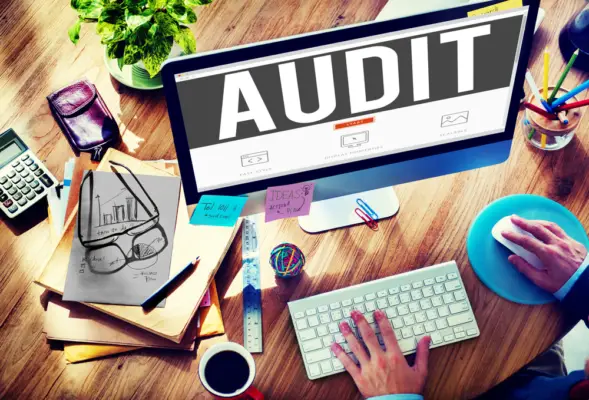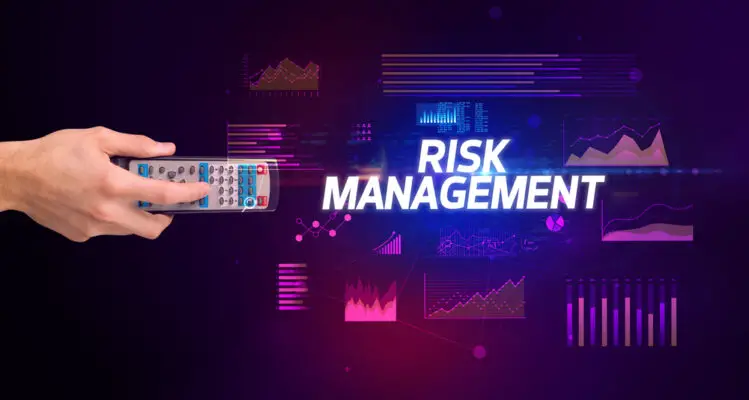Auditing risk management is a process that reviews and evaluates an organization’s risk management practices to ensure they are effective, efficient, and compliant with regulatory standards.
It provides independent assurance of the organization’s risk management framework and processes, highlighting areas for improvement and recommending corrective actions. Here are steps to audit risk management:
Plan the Audit: Establish the audit’s scope, objectives, and criteria. Determine which risk management areas or processes will be reviewed, how deep the review will go, and what standards or regulations will be used for comparison.
Review Risk Management Policies and Framework: Examine the organization’s risk management policy, strategy, and framework. This includes understanding the organization’s risk appetite, the process for identifying, assessing, treating, and monitoring risks, and the roles and responsibilities of different stakeholders.
Evaluate Risk Identification and Assessment Processes: Review how risks are identified and assessed within the organization. This involves examining risk registers, assessment reports, and other documentation to verify that the risk identification and assessment processes are systematic, comprehensive, and consistent.
Examine Risk Mitigation Measures: Check the strategies and controls to manage risks. These could include risk avoidance, reduction, transfer, or acceptance strategies. Ensure that controls are suitable and effective in mitigating risks.
Assess Risk Monitoring and Reporting: Evaluate the risk monitoring and reporting process. Ensure there is ongoing risk monitoring, prompt reporting of changes, and risk information is communicated to all relevant stakeholders.
Check Compliance with Regulations and Standards: Verify that the organization’s risk management practices comply with relevant regulatory requirements and industry standards. This might involve checking documentation, interviewing staff, or observing procedures.
Review Incident Management and Recovery Plans: Look at how the organization handles incidents and crises and how it recovers from them. Ensure there are robust plans and procedures in place for these scenarios.
Interview Key Personnel: Talk to key staff involved in risk management. This can provide insights into the organization’s risk culture, understanding of risk management, and how it is applied in practice.
Prepare an Audit Report: After collecting and analyzing the data, prepare an audit report that summarizes the findings, highlights areas of concern, and recommends corrective actions.
Follow-Up: After the report is presented and the recommended actions are implemented, conduct a follow-up audit to ensure that the issues have been resolved.
This approach ensures a thorough examination of the organization’s risk management practices, providing valuable insights for enhancing risk management effectiveness. Remember that risk management is dynamic, and regular audits are crucial for maintaining an effective risk management system.
Risk management is critical to any organization’s operations, as it involves identifying and mitigating potential risks that could negatively impact the organization.
However, simply having a risk management program in place is not enough; it is essential to regularly audit and evaluate the effectiveness of these policies and procedures to ensure they are achieving their intended purpose.
Auditing risk management entails reviewing an organization’s existing risk management strategies, evaluating their effectiveness, and identifying areas where improvements can be made. This process requires a thorough understanding of the organization’s goals, objectives, operations, and potential risks.
This article will explore how you can effectively audit your organization’s risk management program to ensure its continued success in minimizing organizational risks.

Key Takeaways
- Regular auditing and evaluating risk management policies and procedures is crucial for any organization.
- Risk identification and assessment are critical components of effective risk management.
- Appropriate risk mitigation strategies should be designed to reduce the likelihood and impact of identified risks.
- Auditors must assess the level of detail, clarity, employee understanding, and gaps between policies and actual practice using industry standards and best practices.
Understanding the Importance of Risk Management Audits
The importance of risk management audits lies in their ability to objectively assess an organization’s risk management processes, identify gaps and areas for improvement, and ultimately mitigate potential negative outcomes.
Risk management is critical to organizational success as it involves identifying, assessing and prioritizing risks that could impact achieving objectives.
Risk management audits provide an opportunity to evaluate whether an organization’s risk management practices effectively manage risks.
One of the benefits of conducting risk management audits is that they help organizations identify any weaknesses or gaps in their existing processes. Such assessments can be used to develop remedial action plans to strengthen controls and enhance overall risk mitigation strategies.
In addition, auditing helps organizations meet regulatory compliance requirements by ensuring adequate measures are in place for identifying and managing risks.
Another benefit of conducting regular risk management audits is that they help foster a culture of accountability within the organization.
As such, auditors play a crucial role in promoting good governance practices by providing independent assurance on the effectiveness of internal control systems designed to manage organizational risks.
Overall, conducting regular risk management audits is essential for any organization seeking to maintain a proactive approach towards mitigating potential negative outcomes associated with identified risks.
Through objective assessments to identify gaps and areas for improvement, organizations can enhance their overall ability to manage risks effectively while meeting regulatory compliance requirements.
Evaluating Risk Management Policies and Procedures
To evaluate risk management policies and procedures, auditors should thoroughly review all relevant documentation, including company policies, manuals, and guidelines.
This review should assess the adequacy of existing risk assessments and risk mitigation strategies.
During this evaluation process, auditors must examine the following areas:
- The level of detail included in the policy or procedure.
- The clarity of instructions given for implementing the policy or procedure.
- How well do employees understand and follow the policy or procedure?
- Whether there are any gaps between existing policies and actual practice.
Auditors must compare these findings against industry standards and best practices to determine whether their client’s policies adequately mitigate potential risks.
If significant gaps exist between current practices and recommended approaches, then recommendations for improvement must be made.
In conclusion, evaluating risk management policies and procedures requires a thorough understanding of how they relate to an organization’s overall risk assessment strategy.
Auditors must consider many factors when assessing whether these policies provide adequate protection against potential risks.
Identifying Potential Risks and Threats
Identifying potential risks and threats is critical in ensuring an organization’s overall risk management strategy is effective.
Risk identification is recognizing, assessing, and documenting potential events that could hurt an organization’s objectives.
This process requires using risk assessment techniques to identify, prioritize, and evaluate the likelihood and consequences of identified risks. There are several risk identification frameworks that organizations can use to guide their risk identification processes.
One such framework is the Enterprise Risk Management (ERM) framework developed by the Committee of Sponsoring Organizations (COSO). The COSO ERM framework provides a comprehensive approach to identifying risks across all aspects of an organization, including strategic, operational, financial, and compliance-related risks.
Another popular risk identification framework is ISO 31000:2018 – Risk Management Guidelines. This international standard outlines principles and guidelines for effective risk management practices.
It emphasizes the importance of involving stakeholders in risk identification to ensure that all perspectives are considered when identifying potential risks and threats.
Identifying potential risks and threats is crucial to any organization’s overall risk management strategy. Organizations need to employ techniques and frameworks such as those mentioned above, to do this effectively.
Assessing the Effectiveness of Existing Strategies
Evaluating the effectiveness of existing strategies is crucial to ensuring that an organization is well-prepared to handle risks and threats, which can ultimately lead to increased confidence and peace of mind for stakeholders.
Measuring performance is a key component of this process, as it allows organizations to identify where they are succeeding and where they need improvement.
In addition, gathering data from various sources is essential to understand how well risk management strategies work comprehensively.
To measure performance, organizations can use metrics such as incident response time or the number of successfully resolved incidents. By tracking these metrics over time, organizations can identify trends and make informed decisions about allocating resources.
Organizations need to establish clear benchmarks for success to gauge their progress and make adjustments as needed accurately.
Gathering data from multiple sources is also critical when assessing the effectiveness of existing strategies. This may involve analyzing incident reports, conducting surveys or interviews with stakeholders, or reviewing relevant industry research.
A thorough and analytical approach to evaluating risk management strategies is key to ensuring an organization remains prepared for potential threats or risks.
Developing New Risk Management Strategies
Developing effective risk management strategies requires a comprehensive understanding of potential threats and a proactive approach to mitigating them.
Risk assessment techniques must be employed to identify, evaluate, and prioritize an organisation’s risks. This involves analyzing internal and external factors that could impact the business, including financial, legal, operational, reputational, and strategic risks.
Once risks are identified and assessed, organizations can develop appropriate risk mitigation strategies. Risk mitigation strategies should be designed to reduce the likelihood or impact of identified risks. There are several approaches that organizations can take to manage risk effectively.
Some common strategies include avoiding or transferring risk through insurance policies or contracts with third-party vendors.
Other strategies involve reducing exposure by implementing internal controls or strengthening security protocols. Organizations may also accept certain risk levels if they determine that they are within their risk tolerance thresholds.
To ensure the effectiveness of new risk management strategies, organizations need to monitor their implementation and measure their success over time.
Regular reviews should be conducted to assess whether the implemented measures have reduced the likelihood or severity of identified risks. If not, adjustments may need to be made to improve their effectiveness in managing potential threats.
Developing new risk management strategies is an ongoing process that requires continuous evaluation and improvement based on changing circumstances and emerging risks within an organization’s environment.

Frequently Asked Questions
What are some common challenges faced during the risk management audit process?
Common challenges during risk management audits include inadequacies in risk assessment, insufficient documentation, lack of internal controls, and non-compliance with regulations.
Analyzing these issues precisely can help organizations improve their risk management processes and mitigate potential risks.
How often should risk management audits be conducted?
Frequency analysis and risk assessment techniques should be used to determine the appropriate interval for conducting risk management audits.
The frequency of audits will depend on the nature of the risks involved and the level of organizational change that occurs over time.
What are some best practices for communicating audit findings to management and stakeholders?
Effective communication and stakeholder engagement is critical for successful risk management audits.
Best practices include transparent reporting, tailored messaging, proactive communication, and ongoing dialogue to ensure understanding and alignment with organizational goals.
How can technology and automation be used to improve risk management audits?
Technology implementation and automation benefits can improve risk management audits by increasing efficiency, accuracy, and consistency.
Automated data collection and analysis tools can identify potential risks and provide real-time alerts to prevent or mitigate them, enhancing the overall effectiveness of the audit process.
What key performance indicators (KPIs) can be used to measure the success of risk management strategies?
Risk management metrics such as frequency and severity of incidents, risk appetite and tolerance levels, and compliance with regulations can be used to measure the effectiveness of risk management strategies.
Precise tracking of these metrics can help organizations identify areas for improvement and make informed decisions to mitigate risks.

Conclusion
Risk management audits are critical to any organization’s strategy to identify and mitigate risks.
It involves evaluating existing policies and procedures, identifying potential risks and threats, assessing the effectiveness of current strategies, and developing new risk management strategies to enhance the organization’s resilience against uncertainties.
An independent team should perform the audit process with no vested interest in the audit’s outcome.
The team should be composed of individuals with diverse expertise in various areas such as finance, legal affairs, operations management, information technology, and human resources.
Overall, conducting regular risk management audits is essential for organizations to stay ahead of potential risks and threats.
It enables them to improve their risk management strategies while maintaining operational efficiency continually.
Effective risk management helps companies avoid financial losses or reputational damage caused by unforeseen events.

Chris Ekai is a Risk Management expert with over 10 years of experience in the field. He has a Master’s(MSc) degree in Risk Management from University of Portsmouth and is a CPA and Finance professional. He currently works as a Content Manager at Risk Publishing, writing about Enterprise Risk Management, Business Continuity Management and Project Management.

